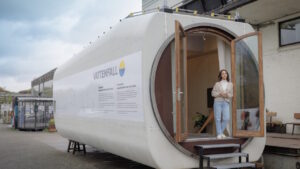UPC Renewables and the Hammond family on Friday unveiled plans for two huge wind farms totalling up to 1,000MW in the north-west corner of Tasmania.
UPC said it had signed a deal with the Hammond Family, owners of Robbins Island and other lands near Smithton on the north west coast of Tasmania, to develop wind farms on Robbins Island and at nearby Jims Plain, totalling between 600MW and 1,000MW.
Solar and non hydro storage options will also be considered.
“The Robbins Island project itself is a very large isolated site and, together with Jims Plain, have some of the best proven wind resources in the world,” CEO Anton Rohner said in a statement.
Rohner said it was being built with an eye to the plan announced by prime minister Malcolm Turnbull and the Tasmania government to turn the state into a “renewable energy battery” for the country. That plan depends on a new line being built to the mainland.
“The Robbins Island and Jims Plain projects, together with Tasmania’s hydro assets and other new renewable energy projects, will assist in making a second interconnector a dispatchable and significant renewable energy generator into the National Electricity Market,” he said.
“The technology to be deployed at the site will be mostly wind energy but the option of additional solar and other non-hydro based energy storage technologies is also contemplated.”
A wind farm on Robbins Island was first discussed almost 16-years-ago, but has not moved forward because of the lack of a viable transmission solution. It says a study into the feasibility of connecting directly to the Victorian grid from Robbins Island has also been initiated.
“With the changes in the energy market and potential viable transmission solutions available this projects is set to proceed; Robbins Island and Jims Plain could accommodate approximately 600MW to 1,000MW of wind energy generation capacity between them.”
He suggested the $1.6 billion project could be ready for investment by early 2019, although the smaller Jims Plan project is expected to be investment ready by mid-2018.
UPC Australia has appointed former Clean Energy Finance Corp chief Oliver Yates to the board.
“This project has the scale and wind resource to become a major contributor to the energy supply challenges we face,” he said. “Operating more than 90 per cent of the time once linked to Victoria, it is highly complementary to the National Electricity Market.”










